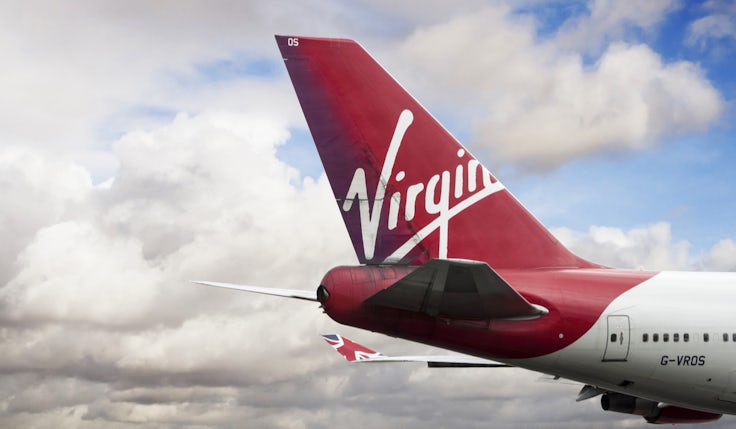How Virgin Atlantic and Great Western Railway defied travel category norms
Ads from the two travel companies stood out from a crowded category to rank among the UK’s top-performing TV campaigns this month, according to Kantar’s ‘The Works’ study.
 Travel advertising has a natural advantage when it comes to earning attention and forming long-term memory structures compared to other categories.
Travel advertising has a natural advantage when it comes to earning attention and forming long-term memory structures compared to other categories.
The sector scores above average for enjoyment, with travel ads sparking strong emotional responses such as excitement, inspiration and surprise, according to Kantar’s global LINK+ database.
Yet despite this head start, many travel brands struggle to create strong brand connections. Too many campaigns, says Lynne Deason, Kantar’s head of creative excellence, “look and feel the same”.
However, Great Western Railway’s (GWR) ‘Five and the Thrilling Engagement’ and Virgin Atlantic’s ‘See the world differently’ have managed to buck the trend, according to Kantar’s ‘The Works’ study.
‘Consistent doesn’t mean boring’: Great Western Railway on the ‘power’ of long-term brand building
The study, which is produced in association with Marketing Week and the Advertising Association’s Trust Working Group, asks 750 consumers to give their thoughts on the top ads over the period, this time looking at TV ads provided by Thinkbox. It also tracks the facial expressions and eye movements of those viewing the ad.
Both GWR and Virgin Atlantic stand out with creative approaches that feel highly distinctive – GWR ranks in the top 3% of all ads, while Virgin Atlantic ranks in the top 14%.
The impressions these ads convey are also seen as unique to the brand (GWR top 33%, Virgin Atlantic top 28%). In contrast, the average travel ad often sits in the bottom third for brand-specific messaging.
Great Western Railway
GWR’s ad is a clear example of the “power of brand-centric storytelling”, says Deason. The Famous Five campaign, launched in 2016, has succeeded in helping GWR make its mark.
In the ad, the Famous Five set off on a mission to return a lost ring in time for a proposal – a narrative that keeps viewers engaged and eager to see how the story ends (top 5% of ads).
Facial coding shows strong emotional engagement throughout, placing it in the top 11% of all ads for emotive power or ‘expressiveness’.
Overall, it’s ‘highly enjoyable’ (top 8%), and successfully conveys that travelling with GWR is ‘fun and enjoyable’ (message in top 19%). Viewers responded positively to the story, its distinctive execution, the happy ending, and the emotional resonance.

The campaign blends nostalgic storytelling with a modern twist. The proposal comes from a woman to her girlfriend, ending with a celebratory kiss. While this moment resonates across age groups, it proved particularly impactful with younger viewers.
However, around 11% of viewers expressed a negative response to the depiction of a lesbian couple, some describing the ad as “woke” or suggesting it was part of a wider trend that has “gone too far”.
Yet, Kantar data shows just 3% of UK ads feature LGBTQ+ representation. GWR’s campaign demonstrates that positive portrayals of underrepresented groups can deliver societal value and business benefits despite resistance from a small minority.
Virgin Atlantic
Virgin Atlantic’s ‘See the world differently’ also strikes a chord, connecting with audiences in a “meaningful, distinctive and entertaining way”. It lands in the top 11% of all UK ads for ‘feel-good factor’.
As one respondent put it: “I liked how humane and informative the ad is, and it also made me proud of using Virgin Atlantic in the past”.
The brand’s distinctive assets – from its colour palette to the aircraft and aircrew – help signal who the ad is for, while reinforcing existing perceptions among loyal customers, respondents noted.
The phrase “be a rainbow in the cloud” ties intuitively to the brand’s mission to empower people to see the world differently, landing in the top 19% for “encourages people to get out there and connect with people of different cultures”.

The ad captures attention from the opening moments and holds it through to the end (top 20% on second-view expressiveness). Key scenes – dancing on the bus, trying spicy street food, and a dramatic ocean dive – are especially “emotively powerful”.
The ad’s celebration of diverse cultures, locations and joyful human connections resonates strongly. The people being shown are well liked (top 15%), people feel they can identify with them (top 10%) and the travel experiences and moments shown are things that they can also relate to (top 14%).
‘Freedom within a framework’: How Virgin Group’s brand boss navigates 40 businesses
Like the GWR ad, it’s perceived to portray society in a modern and progressive way (top 9%), and the characters are considered positive role models (top 19% female, top 14% male).
Both ads show strong potential for short- and long-term effectiveness.
“They demonstrate the importance of ignoring the unwritten category rules and instead adopting a unique creative approach that connects powerfully with the audience and differentiates your brand through the impressions it gives people about your brand and through the way that vision is brought to life,” adds Deason.






